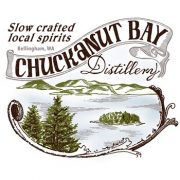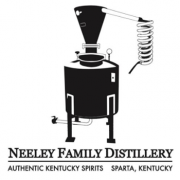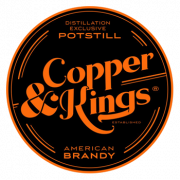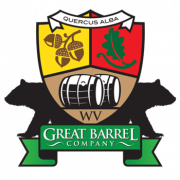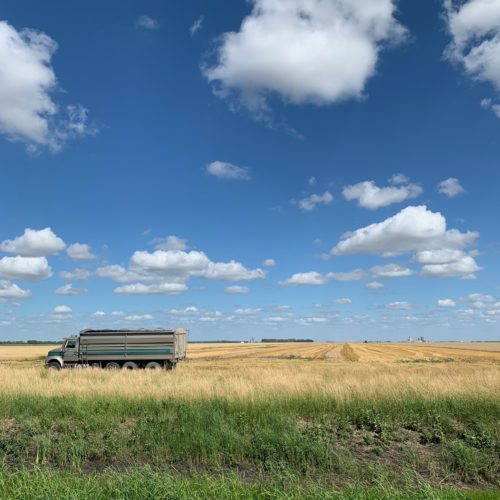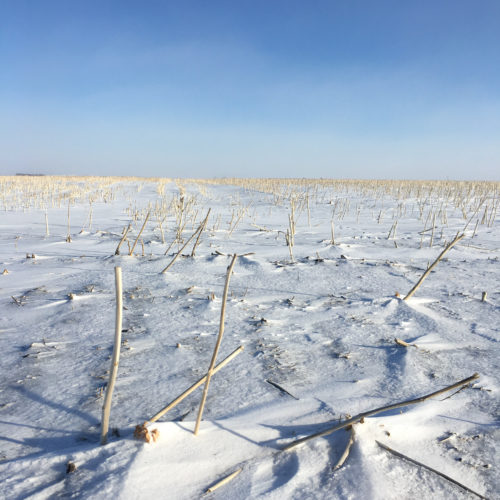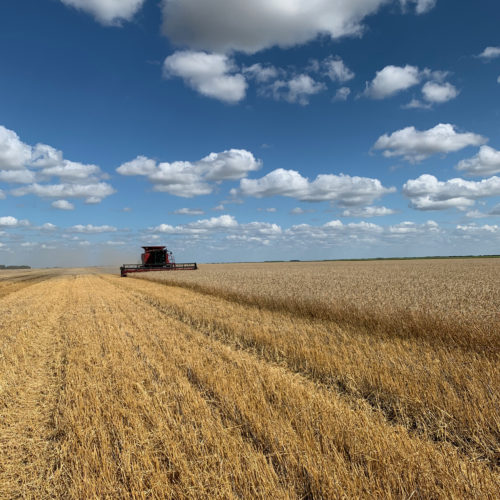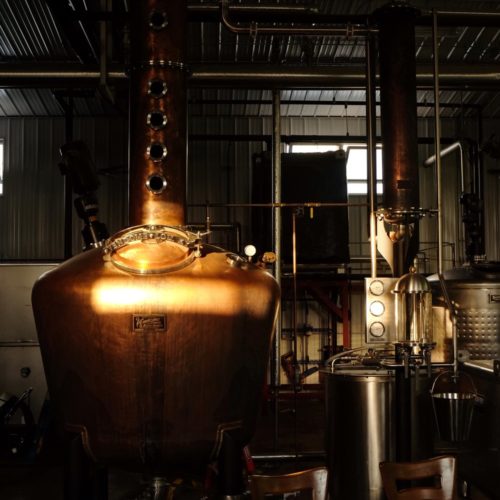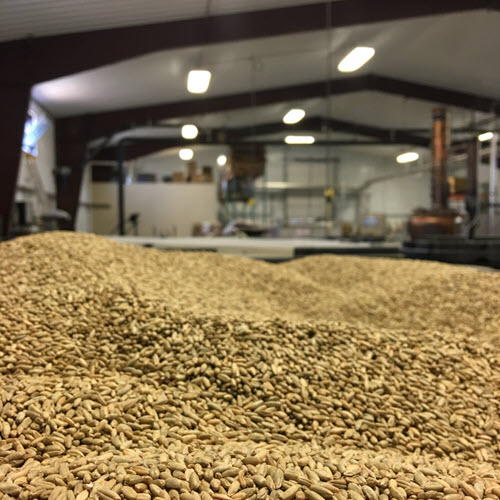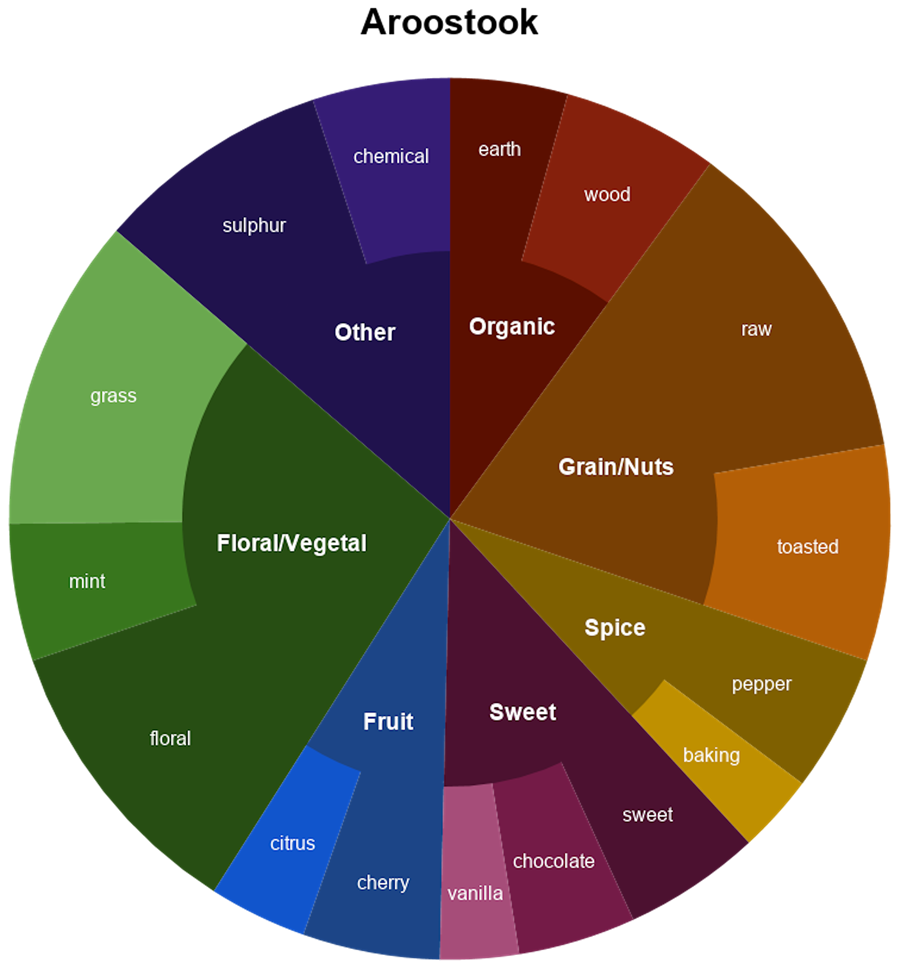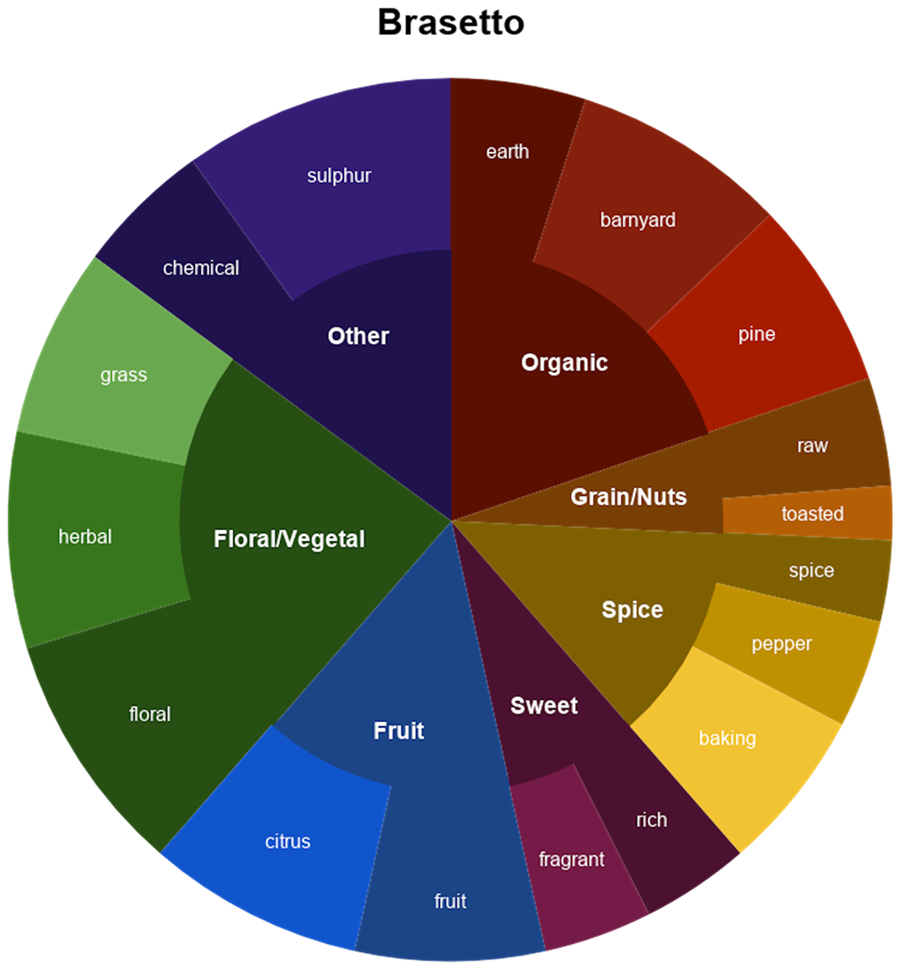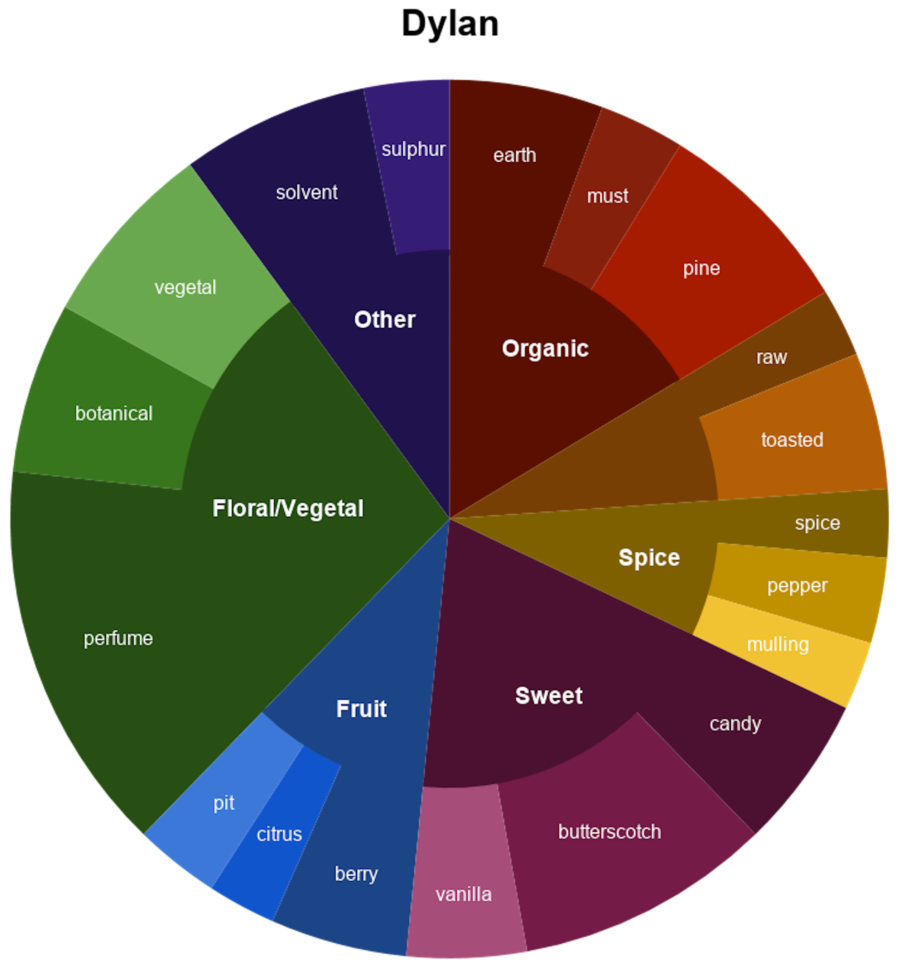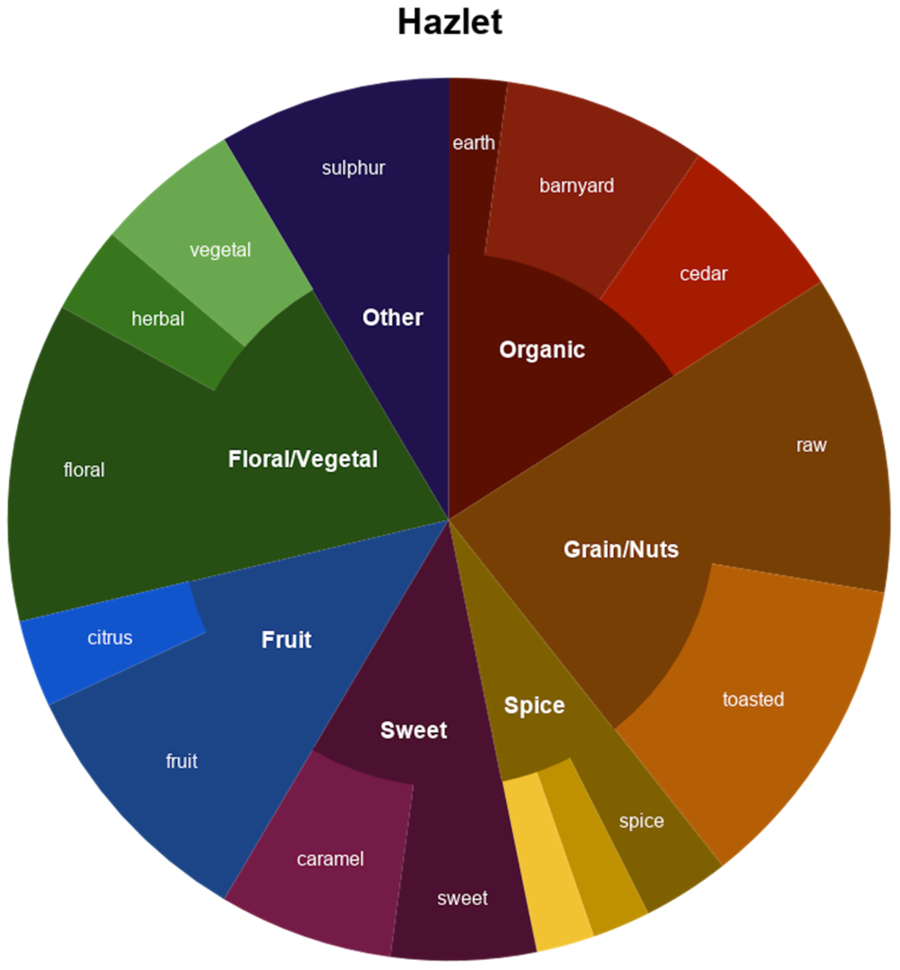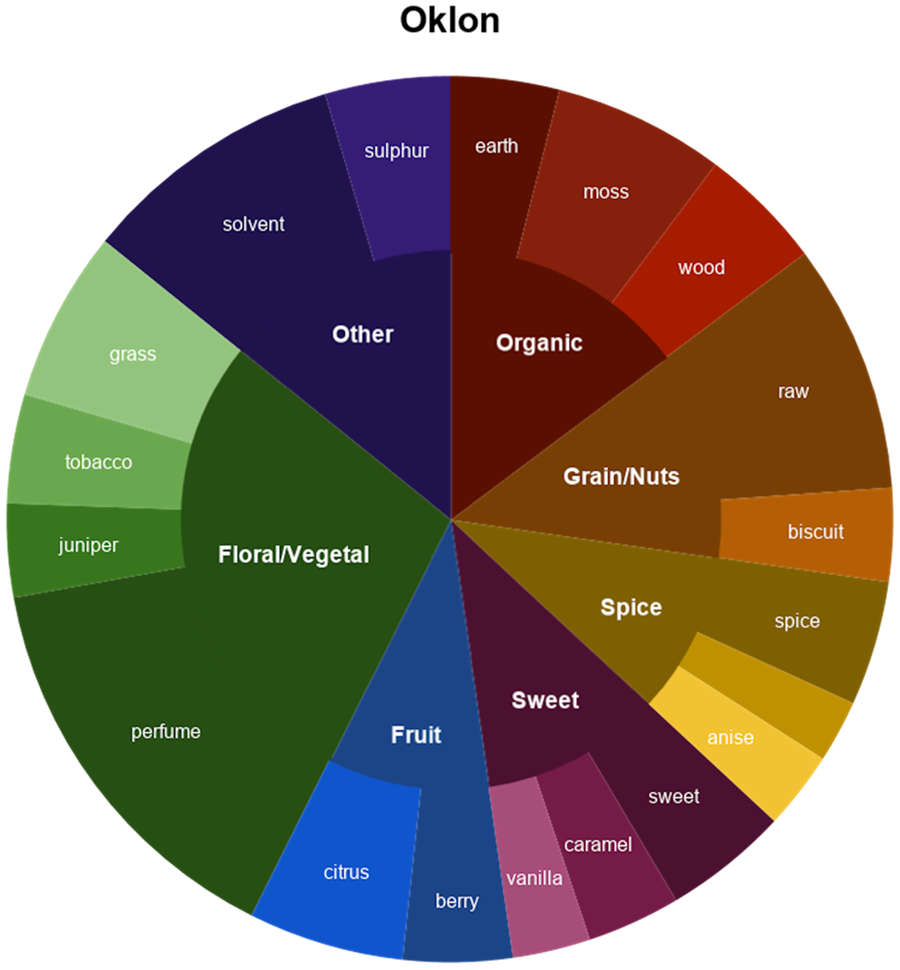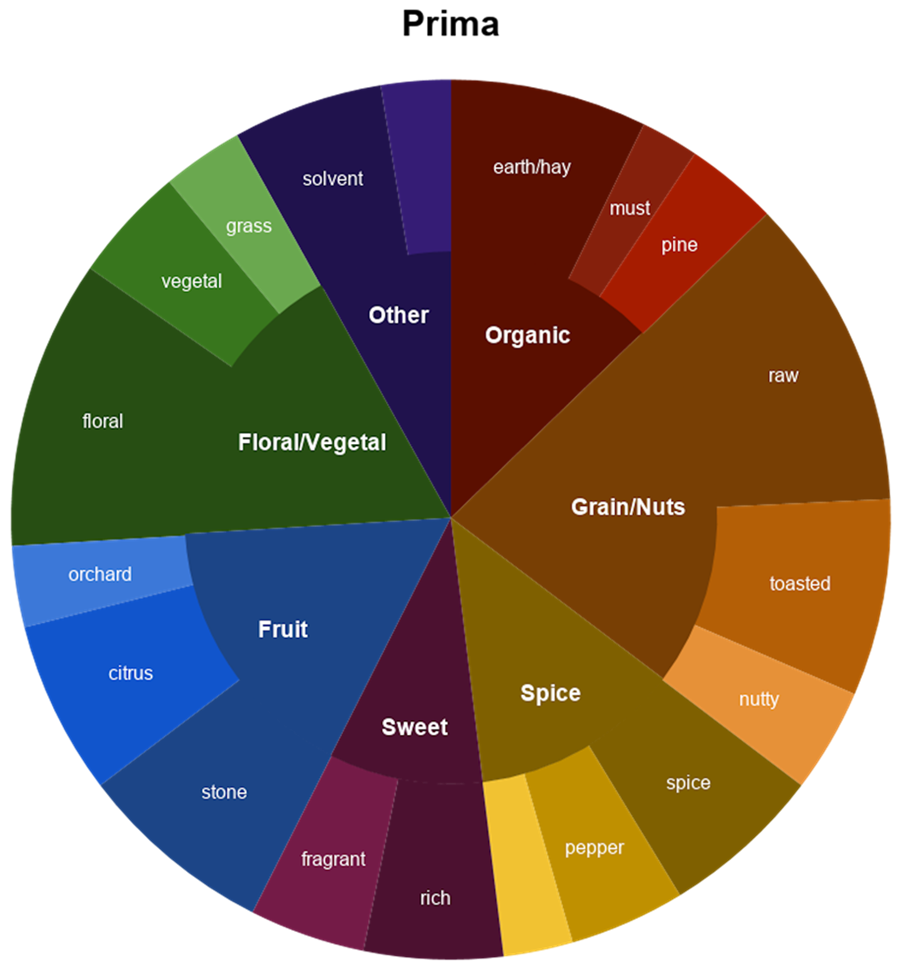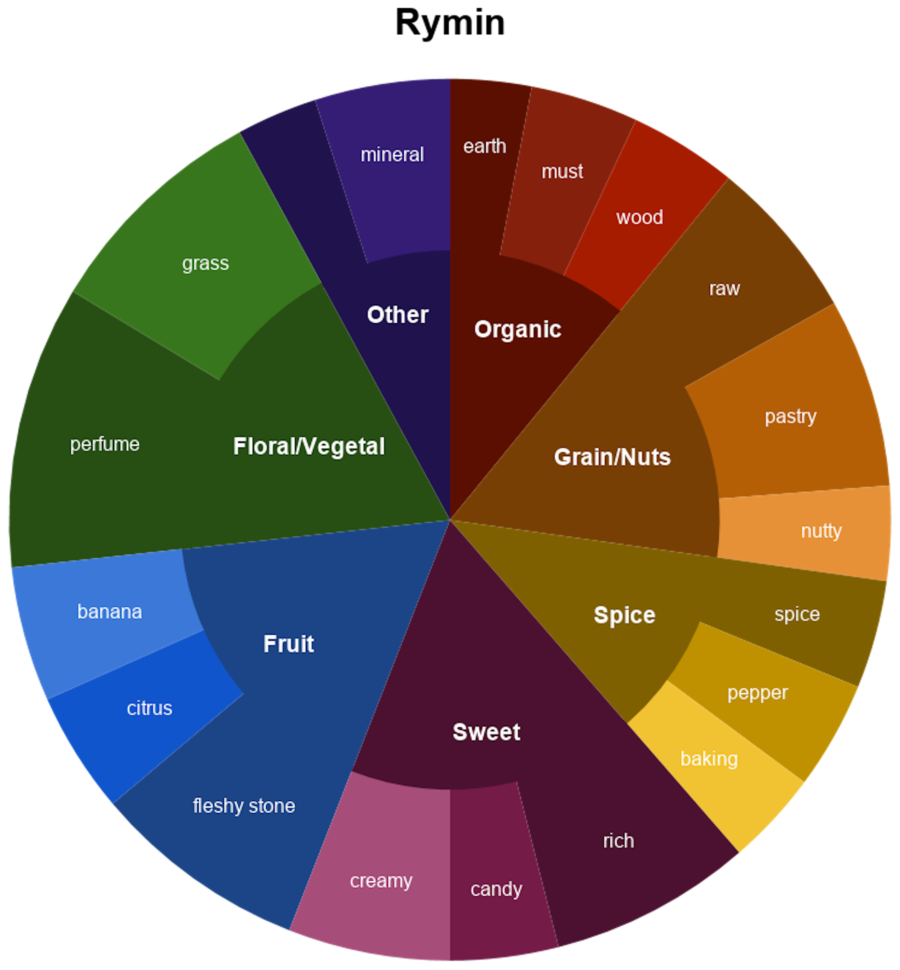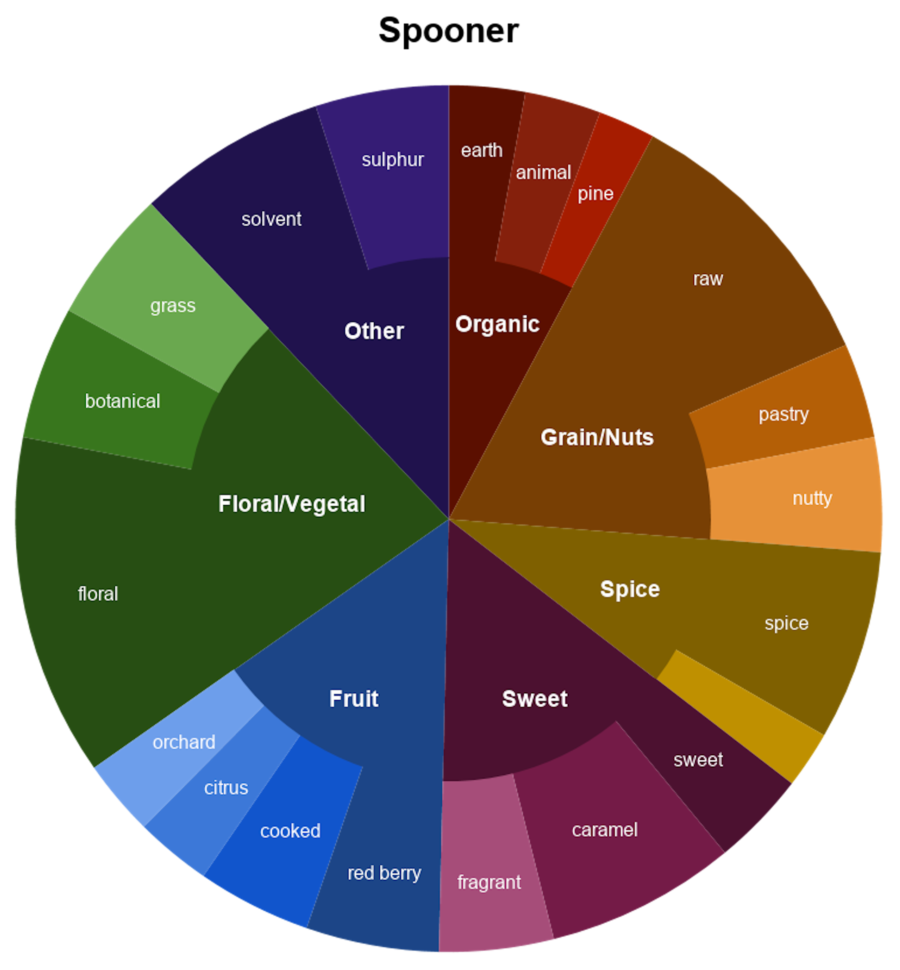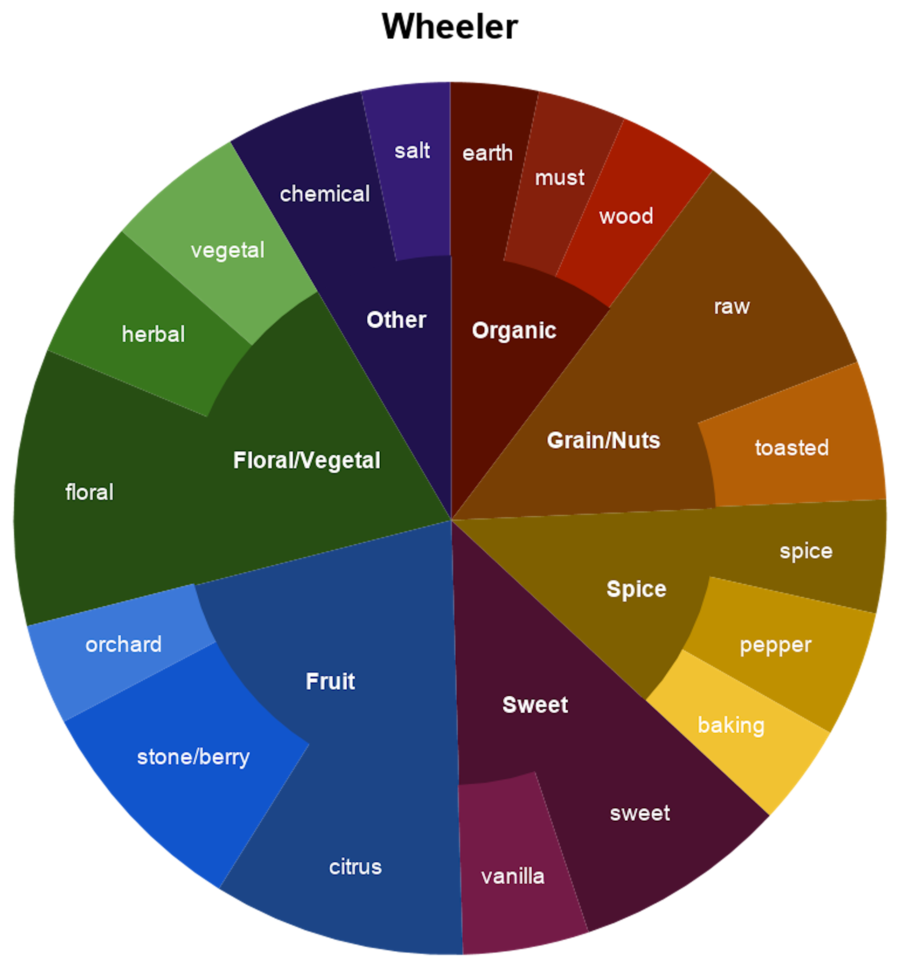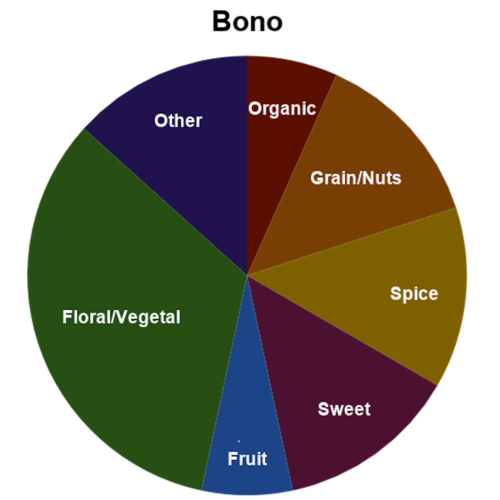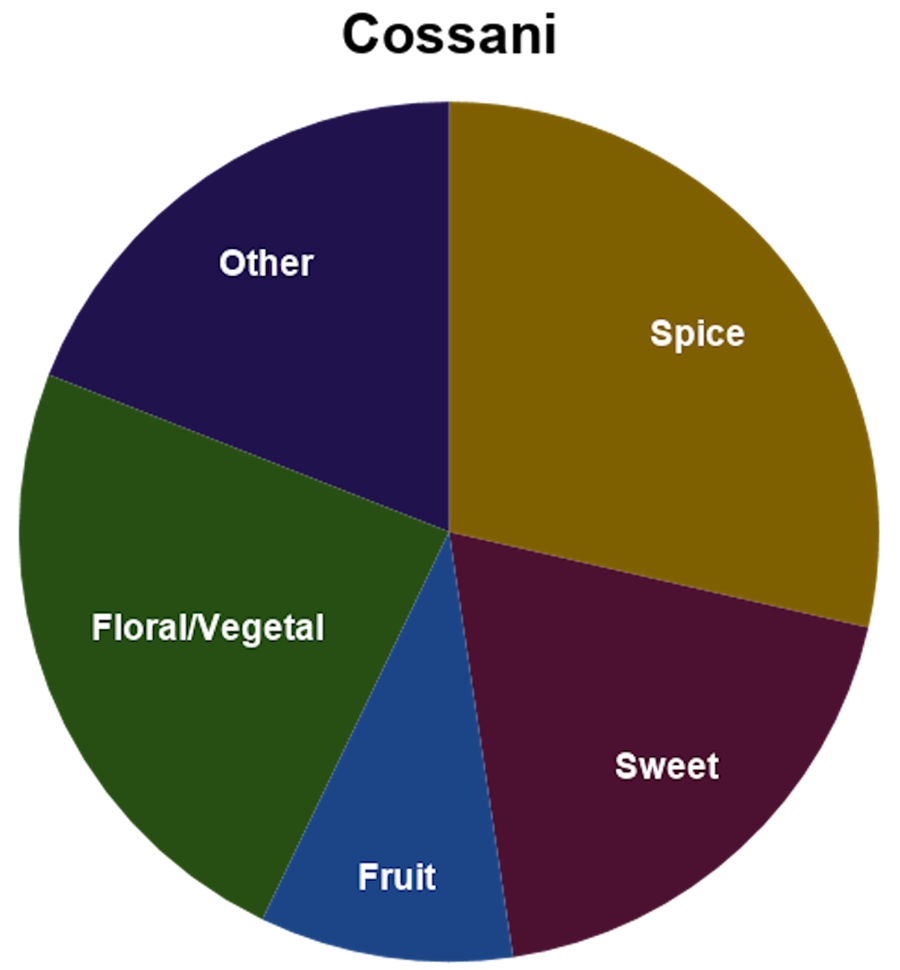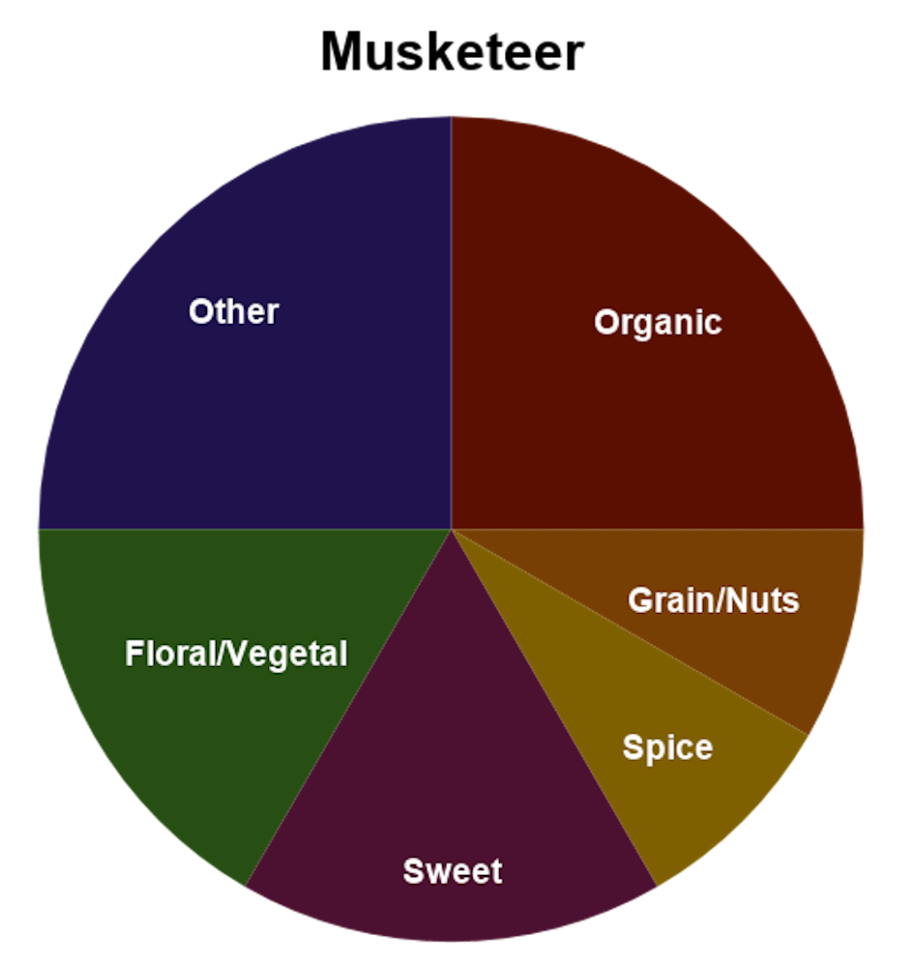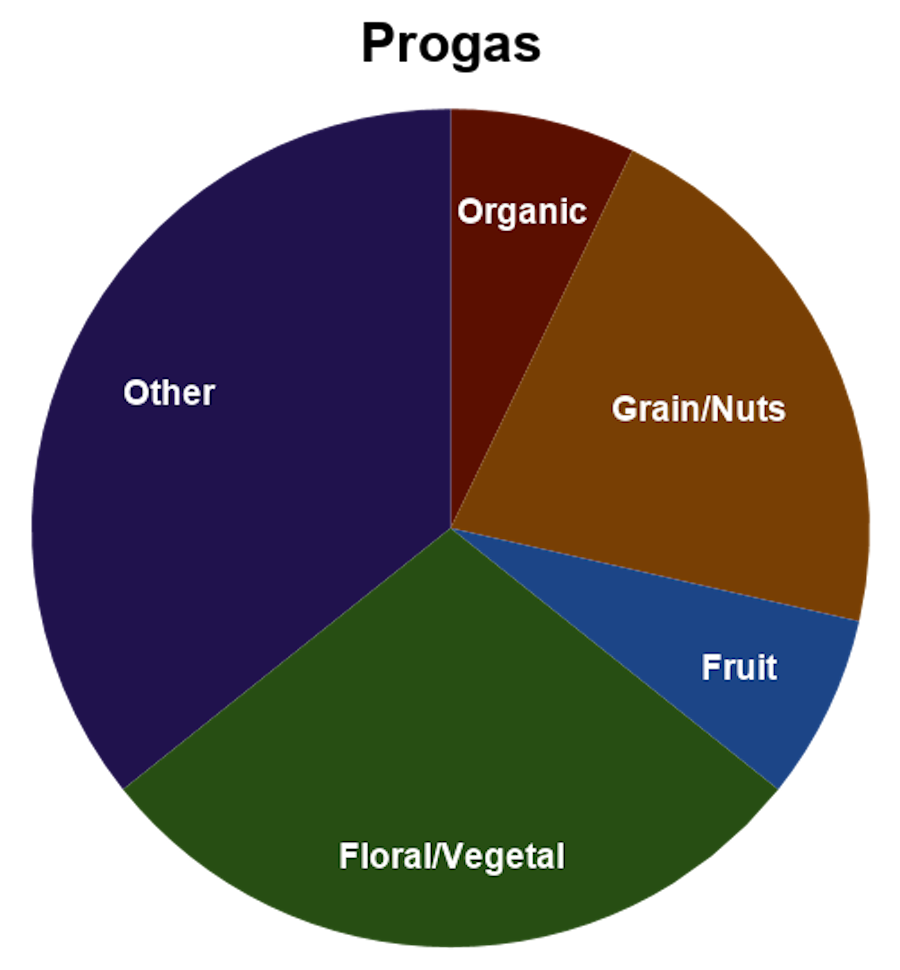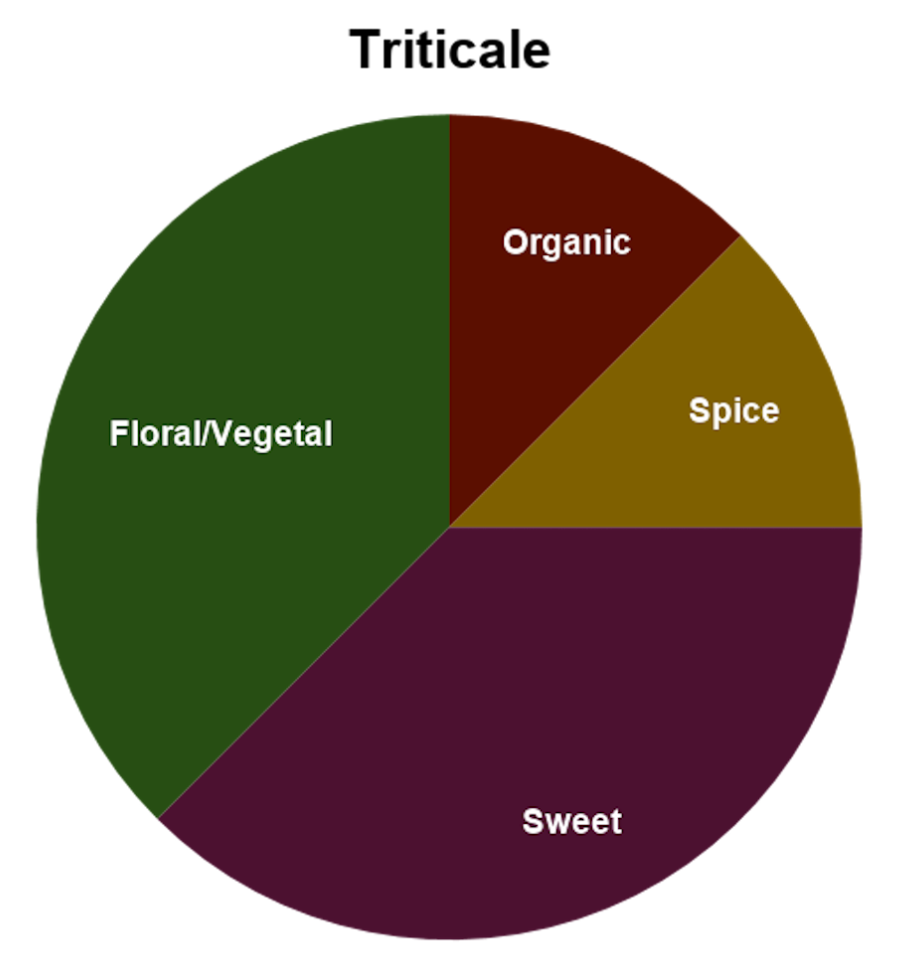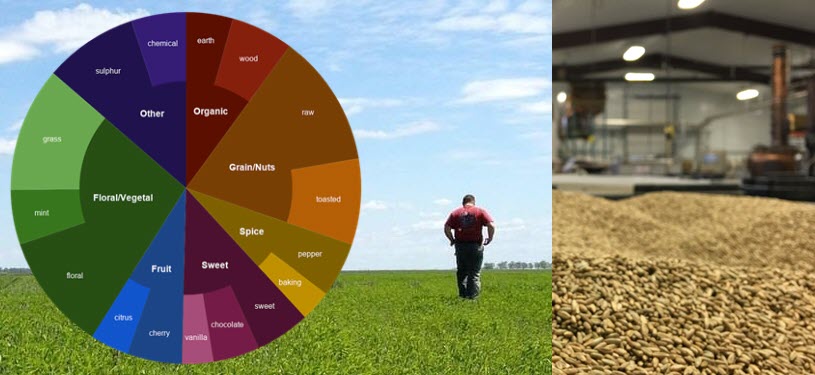
The results of the five year study on the effects of rye are in and it’s conclusive: rye grain variety alone contributes to flavor in whiskey.
After five years of research that involved planting, harvesting, fermenting, and distilling 15 different varieties of rye, which nearly 200 participants across the U.S. tasted blind, we are thrilled to release the Far North Rye Study to the world.

The great wines of the world are tied to the variety of the grapes from which they are made. However, for whiskeys, which are fermented and distilled from grains, that varietal information and the tie to the agriculture behind it is often lost. We aim to change that.
Farmer and head distiller Mike Swanson is the co-owner of Far North Spirits located in Hallock, Minnesota. Swanson conducted the study with research support from Jochum Wiersma, small grains specialist at the University of Minnesota Crookston. Mike’s interest in studying rye varieties stemmed from his strong desire to know, based on data, if the variety of grain could influence flavor in distilled spirits. The study was also supported by a grant from the Minnesota Department of Agriculture.
And before we get started on Mike’s five year study let’s take a quick look at what makes up a whiskey’s flavor.
The Five (or Six) Sources of a Whiskies Flavor
Depending on whom you ask there are generally five sources to the flavor of whiskey. There are many variables within these five to six sources but for this most part these are the fundamentals of all whiskeys.
- Grain – That’s the purpose of this particular study. If we are talking about bourbon it’s got to be at least 51% corn while the remaining grains and percentages vary widely. Other common grains include barley, wheat and rye. A high rye bourbon is a spicier bourbon. If there is more than 51% rye then this is a rye whiskey rather than a bourbon.
- Water – Varies widely across the country. Many distillers simply use city (tap) water while others swear by their water source from hundreds of feet underground or simply from a nearby spring.
- Yeast/Fermentation – Fermentation is where the magic begins as the yeast interacts with mash giving off carbon dioxide which begins to create alcohol. There are many varieties of yeast. Many of the old time distillers guard their proprietary yeast strains like the family jewels.
- Distillation – Whether it’s a pot still or column still this is where the fermented mash gets heated until it begins to turn into a vapor. Those vapors are captured, cooled and condensed at least once if not more depending on what is being distilled.
- Maturation – This is where the magic continues. Many say in the case of whiskey that 50% or more of a bourbon or whiskey’s flavor comes from the maturation process that happens inside the barrel.
- Bottling – Many sources go one step further and take into consideration bottling. What they really mean is filtering. The trend these days is to use minimal filtering to remove a barrels char but leave whatever other oils may be in the spirit to keep maximum flavor. There are many ways to filter a whiskey from simple paper filters to a variety of charcoal filters (wood, coconut shells), diatomaceous earth and more. And of course if a distiller is cutting a spirit down from cask strength to a standard bottling proof water comes back into the equation for a second time.
And now let’s get on with the results of this in depth five year rye grain study.
The Rye Study: Variety Determines Flavor
Drinking is an agricultural act. This is a reworking of the classic quote from Wendell Berry’s “The Pleasures of Eating”, which at the time was a call to recognize the thread that connects eating to agriculture and how land is used. Critical to this understanding is recognizing the origins of the food we eat, and the beverages we drink.
The great wines of the world are inextricably tied to the variety of the grapes from which they are made. A similar appreciation for varietal influence exists among enthusiasts of agave distillates such as Tequila, Mezcal, and Bacanora. However, for whiskeys, which are fermented and distilled from grains, that varietal information and the tie to the agriculture behind it is often severed. Just imagine if nine out of 10 bottles at your local wine shop were simply labeled “grape wine”, with no mention of whether it was a Cabernet or Chardonnay. That is the current state of the rye whiskey market.
When people talk about whiskey, the conversation is usually about age – long promoted as the only metric of merit, in which older equals better. Distillers often market things like lost and forgotten barrels, which creek the water trickled down, how grand-dad made it back in the day, and lately, which celebrity endorsed it. Most don’t spend time discussing the actual base ingredients. This leaves many consumers unaware of which grain – let alone which variety – the spirit in their glass is actually made from. Surprisingly, most whiskey makers are equally unaware of the variety of grain they are distilling.
This ambiguity is a function of modern grain trading. As a staple food crop that is easy to dry, store and transport, grains have been gathered and exchanged for as long as human civilization itself. Since World War II, this essential commerce has become increasingly centralized and commoditized. The majority of what is bought and sold now flows through massive storage and processing facilities – known as grain elevators in the rural midwest. At your typical elevator, truckloads of grain from dozens of farms are graded and stored together. As such, the grain stored at these facilities is a mix of many different strains and designated as “Variety Not Stated” or VNS.
The elevator system is extremely efficient, and fundamental to the trade network that farmers and consumers rely upon. The majority of grain merchants who supply America’s distilleries source grain through this traditional commodity supply chain and therefore work without concrete knowledge of the grain varieties that they are selling. The varietal information is lost before its influence on flavor can even be considered. There are craft whiskey distilleries that have begun to circumvent this supply chain and buy grains directly from local farmers as a point of differentiation. Still, most of these newcomers focus on the relationship with the farmer as a feature of regional pride and profile, not as a means to highlight distinctive flavors through varietal selection.
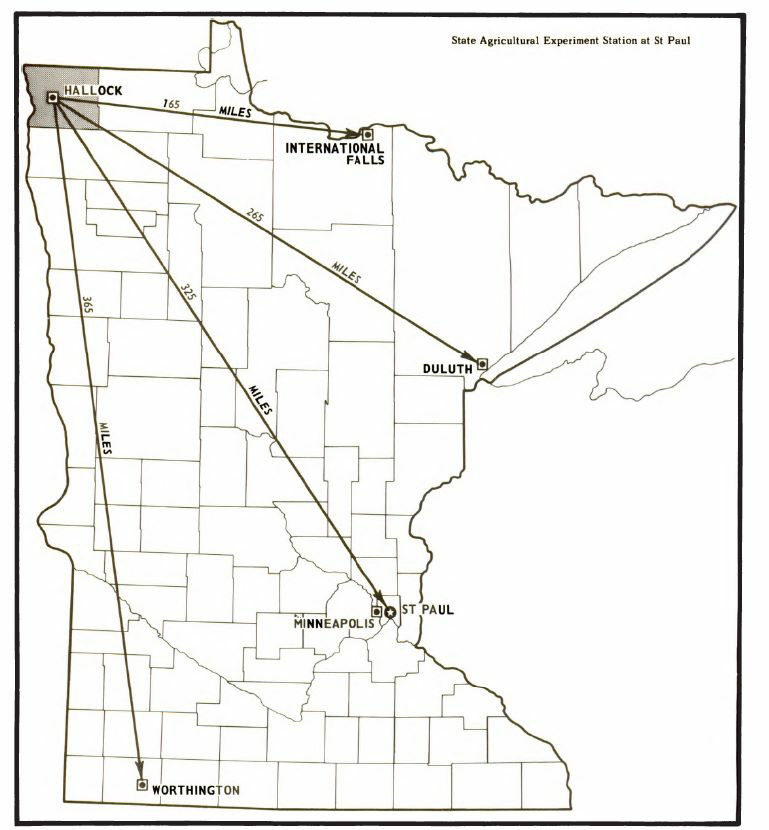
Stay Informed: Sign up here for the Distillery Trail free email newsletter and be the first to get all the latest news, trends, job listings and events in your inbox.
Far North Spirits, an estate distillery in Northern Minnesota’s Red River Valley, takes this one step further by growing the grains that they use to make whiskey. Michael Swanson built Far North Spirits in 2013 on his family’s 100-year-old farm. As a fourth generation Minnesota farmer and the first in his family to marry farming with distilling, Mike oversees all aspects of production from the seeds that are planted in the fields to the spirits that are put in the bottle.
Coming to this venture as a farmer first, Mike originally chose and seeded AC Hazlet rye in 2012 strictly for its agronomic properties: winter hardiness, straw strength (a measure of resistance to lodging, or laying flat in strong winds), resistance to fungal diseases, and projected yield in the Northern Minnesota plains. It was not until 2014 that the varietal selection’s influence on the flavor of the whiskey was considered. Far North Spirits received an inquiry from a farmer in Maine about the availability of AC Hazlet seed. The farmer was seeking Hazlet in particular for its reputed rich, vanilla note when distilled with less of the pepper and spice notes most commonly associated with rye whiskey.
This prompted Far North to research the influence of rye varieties on whiskey flavor and delve into the published scientific literature on the subject. This investigation yielded no results. Inquiries made with a small grains specialist at the University of Minnesota again yielded no results. However, the specialist recommended designing a crop research study, as it would coincide with ongoing varietal field trials that were being conducted for the first time in over 20 years.
As one of a handful of estate distilleries in the United States, Far North Spirits is in a unique position to explore the influence varietal differences can have on the flavors of a distilled rye whiskey. Thus, in February 2015 Mike partnered with the Minnesota Department of Agriculture, receiving a crop research grant to complete a first-of-its-kind multi-year study to evaluate varieties of winter rye for agronomic performance in the field and flavor/sensory performance once distilled. What follows are the results of field trials conducted on the Swanson Farm in northern Minnesota and sensory analyses conducted with participants in blind tastings throughout the U.S.
Farming
Rye (Secale cereale L.) has been cultivated for over 2,000 years.
It is generally considered as a reliable, hardy crop that grows wells on poor soils. Major growing areas are Northern and Eastern Europe, with smaller amounts grown in North America, Northern China, and Southern Europe. It is valuable as a grain, cover crop, and forage crop. It has also proven useful in organic crop rotations for its allelopathic properties (weed control). Production is considerably smaller than the other main Triticeae, wheat and barley.
Different varieties of rye have been developed all over the world for their usefulness in different soil types and growing conditions. A variety is a taxonomic category that ranks below subspecies or species, its members differing from others of the same subspecies or species in permanent, heritable characteristics. This categorization is well understood with wine grapes – Pinot Noir, Sauvignon Blanc, and Syrah are all the same species (Vitis Vinifera L.) but are very unique in their ideal growing conditions and physical attributes.
For this study, certified rye seed was procured from multiple seed houses. Each of the 15 varieties listed in Tables 1 and 2 below were planted in one acre test plots in 2015, 2016, and 2017 with Hazlet cultivated as a common check each growing season. The test plots were located in three fields with very similar soils located near the Far North Spirits distillery, each measured approximately 210 feet by 210 feet and were situated at least 66 feet apart to reduce pollen drift. Every variety planted was a winter rye, and as such was seeded in September, forced into dormancy by freezing temperatures over the winter, then harvested the following August. Fertilizer and herbicide applications were made using the applicable University of Minnesota guidelines, but no fungicide or insecticides were ever used.
The agronomic characteristics tracked in the University of Minnesota Winter Rye Field Crop Trials are those traits which most directly affect farmers’ profits: yield and plant vigor. Specifically, these are:
Winter hardiness – how well the variety survives overwintering
Days to heading – a measure of time to maturity
Plant height – an indication of potential for lodging, where the taller the plant, the more susceptible to high winds
Straw strength – another measure of the potential for lodging, where stronger straw equates to greater resistance to lodging
Ergot – a measure of the variety’s susceptibility to ergot infection. Ergot is the most significant of the fungal diseases affecting rye, as it has no fungicide remedy. Other fungal pathogens such as powdery mildew, leaf rust, leaf spotting diseases, or fusarium head blight can be treated with a fungicide and eliminated.
Test weight and grain protein – measures of grain quality most important to the milling/baking industry. Protein levels are less important to distillers, as the starch component is the fermentable component.
Yield – this is one of if not the single most important characteristic for farmers, as it directly affects profitability. Yield is measured in bushels/acre. A bushel of rye is generally 56 pounds. An acre is 43,560 square feet.
(Click on any heading in a table to sort the list.)
Table 1: Characteristics of Rye Varieties Trialed in 2015-2020
[table “” not found /]Table 2: Characterics of Rye Varieties Trialed in 2015-2020
Scored on a scale from 1-9, with 1 = best and 9 = worst.
[table “” not found /]Distilling
Rye is notorious amongst distillers for being difficult to work with.
This is due to a high proportion of beta-glucans and arabinoxylans, which gelatinize when mashed. This viscous mash can cause a number of headaches: sticking and clumping within the mash cooker, abetting stuck fermentations, and increasing the time needed to clean equipment between batches. Therefore, each rye variety was evaluated by Far North distillers as it was being processed and assigned a score from 1-5, with 5 being the easiest and 1 being the most difficult. The score includes ease of milling, adjustment of standard enzyme package during the cook process to achieve workable viscosity, ease of transfer to fermentation tanks, and cooker cleanup time.
The Distillers Rye “Swear Factor” Scale
Another way to look at this score is as a “swear factor” with a score of 4-5 meaning that one could comfortably cook this variety in front of your grandmother, all the way down to a score of 1, recommended to be cooked in the company of sailors and/or distillers only.
Table 3: Processing Scores and Distillate Yield in Optimal Proof Galls (OPG)
[table “” not found /]It is important to note that these scores are for comparisons between varieties of rye only and assume a baseline level of difficulty that is present in all rye. The scores are not meant to be used to compare rye to corn or barley, for example.
Yield as presented here is in optimal proof gallons (OPG) obtained from a single batch. A single pass on the still was made, meaning a single run in a single day. During this run, heads, hearts, and tails are separated from each other (diverted to different tanks) in a process referred to as “cuts”. Because they require the use of smell and taste alone, the cuts were made by the same distiller for all varieties. This technique was also used because test plot yields for some varieties were so low that only one batch could be made from the grain harvested. As such, OPG yield data for each variety should be taken with this in mind. Substantially greater yields could be achieved by running multiple batches, using multiple stripping runs and a spirit run technique.
Each variety was batch processed identically using the following method:
- 1,000 pounds of grain milled using a single pair, 9×6” roller mill
- Grain mixed with 412 gallons of 170F water and cooked for 30 minutes
- Enzyme package consisted of Novozymes Viscoferm, Termamyl SC, and Saczyme
- Mash was cooled to 90F before pitching Lallemande DistilaMax DS yeast
- Mash was transferred to open-top fermenters and fermented for 4-5 days, with cooling jackets engaged as needed to keep temperature under 95F
- Upon completion of fermentation, mash was transferred to 500-gallon Vendome hybrid (pot + 8-plate column) pot still
- Each mash was distilled using a single pass whiskey technique. Conservative, sensory cuts were made by one distiller for all batches. Distillate was collected at 152-155 proof. From this, four gallons of distillate was reduced to 90 proof with R/O water (water softened to 2 grains of hardness, and brought to 10ppm total dissolved solids from 300ppm) and stored in glass carboys.
Sensory
Over the course of three years, white whiskey distillate was presented to 190 participants.
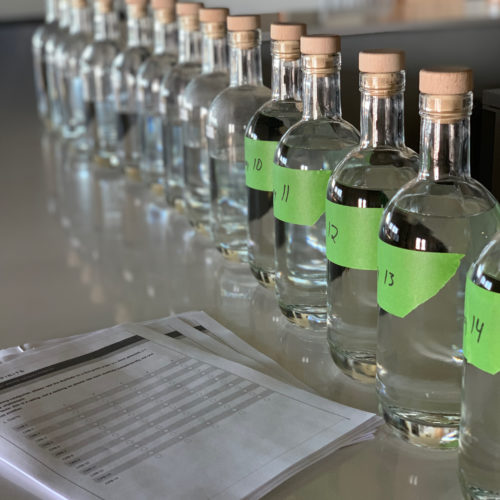
This included a mix of industry experts and laypeople, including attendees of distillers’ conferences, trade events, agricultural college professors, distributors, bartenders, whiskey writers, and the general public who attended events held at Far North Spirits. A simple sensory questionnaire was given to each attendee for them to fill out with a descriptive section which allowed the participant to describe what flavor profiles they were tasting in each distillate. The questionnaires were collected and the responses entered into a database. The responses are presented here as flavor wheels, showing the most common terms associated with each variety.
The next five varieties had fewer respondents leave comments on their flavors, so their flavor wheels are less robust in descriptions. Foresetti had zero written comments on its flavor and is not included among the flavor wheels.
Conclusion
As this study was made possible by a crop research grant from the Minnesota Department of Agriculture, the focus is on rye varieties that are likely to be grown successfully in the extreme climate of northwestern Minnesota.
It is important to note that this is by no means a comprehensive list. Dozens more varieties of rye have been developed in the U.S., Canada, and Europe, and more are being released each year. However, even within this relatively limited sample significant differences were recorded from the field to the glass.
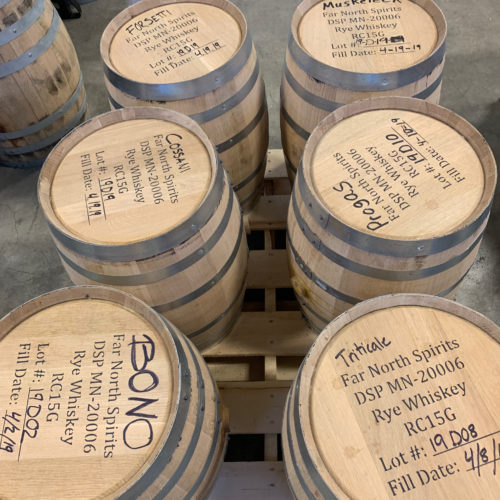
Rye varieties aging in barrels. 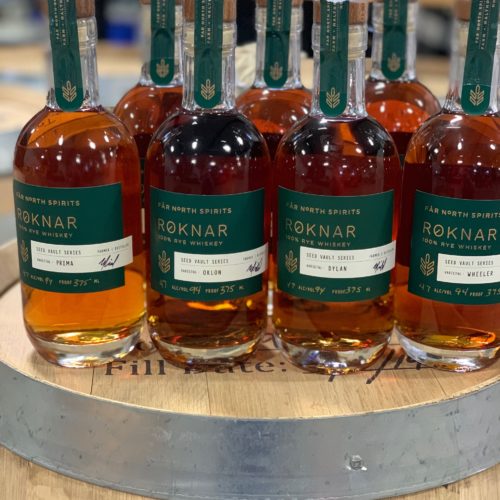
Each single barrel variety of aged rye from the study was released as Roknar 100% Rye, collectively known as the Seed Vault Series, in 2019 and 2020. 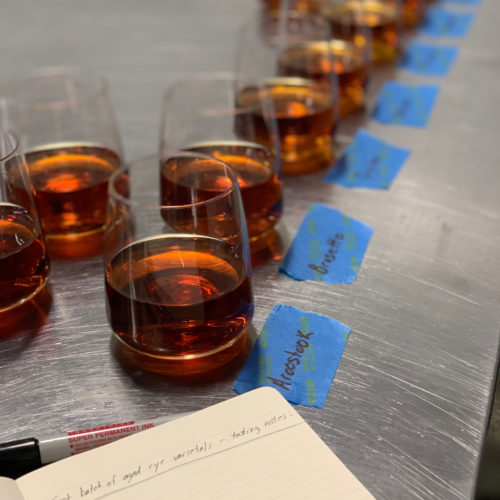
Although it was not technically part of this study because data was not gathered, each of the distillates were barrel aged and further assessed for aroma and flavor.
Ultimately, whiskey is to be enjoyed by humans, with their respective myriad of aroma and flavor interpretations. For this reason, it was decided that human noses and palates would be the best way to determine whether significant differences in aroma and flavor existed between varieties. Depending on a participant’s confidence in their descriptive abilities, the responses also offer insight into what particular flavors were evoked during the tasting. Unquestionably, what participants in the blind tasting reported was significant differences in aroma and flavor based on rye variety alone. Some varieties, especially the newer hybrids, produced flavors that more closely resemble each other. However, differences in flavor were decidedly more pronounced between older, open-pollinated varieties compared to newer hybrids.
These differences make sense when one considers the characteristics of open-pollinated versus hybrid ryes. Open-pollinated grains are produced by being allowed to cross pollinate with plants of the same variety. They pollinate over the course of several days and produce stands that have some variability from one end of the field to another. Seed saved from open-pollinated varieties will be “true to type”, which means that as long as it has not been allowed to cross pollinate with another variety, the seed will produce a plant that is similar to the parent plant. The open-pollinated varieties that Mike grew differed from each other widely, both in agronomic characteristics as well as in distilling attributes. The advantages of open-pollinated varieties are reduced costs (certified seed is less expensive, and you can save seed for multiple years) and uniqueness of flavor.
Hybrid grains are produced from the deliberate crossing of two different parent lines, each with characteristics desired for the offspring. Hybrid ryes pollinate very quickly, sometimes in a single day. If winds are low and your timing is lucky, you can see a cloud of pollen over the field. Hybrid ryes produced stands that were robust and uniform from one end of the field to another. Stand is an agricultural term that evaluates the overall quality of a young field of plants, as well as the proficiency of the farmer. “A good stand” is an assessment of germination and plant emergence rates, plant population, and plant health/vigor. Consequently, the term also evaluates seed quality and viability, soil condition and fertility, seedbed preparation, seeding depth, uniformity of seed distribution, and seeding equipment maintenance and quality.
Hybrid varieties will not produce seed that is “true to type” and so saving seed from hybrids is not desirable. The hybrid ryes that Mike grew resembled each other quite closely both in agronomic characteristics as well as distilling attributes. The advantages of hybrid ryes are dramatically increased yields and vigor, uniformity/consistency, and increased disease resistance. The flavor of the various hybrid ryes was very similar coming off the still as well as after barrel aging, almost to the point of being nearly interchangeable.
Although it was not technically part of this study because data was not gathered, each of the distillates in the study were barrel aged and further assessed for aroma and flavor. Each distillate was aged in 15-gallon barrels from The Barrel Mill, which were coopered on the same day during the same shift. Once filled, the barrels were positioned on the same rack in the aging room for 18 months. The anecdotal results here were significant. Differences in flavor between white distillates that were thought would be erased by the barrel were, in fact, amplified. Varieties that scored high as white distillate produced aged whiskies that were quite pleasant. And some varieties that did not score well as white distillates did not produce aged whiskies that were anything special. No surprises here. But it was especially interesting to note that some varieties that scored quite low as white distillates became exceptional post aging. Of particular note here were the varieties Oklon and Spooner.
Oklon was not easy to process and didn’t score well as a white distillate. However, after barrel aging, Oklon yielded an intriguing whiskey with notes reminiscent of a highland single malt scotch, and a smooth finish. Similarly, Spooner was not easy to process and did not score well as a white distillate. But after barrel aging, Spooner yielded complex and sophisticated flavors that set it apart from many of the other distillates. Further research is called for here, as the aging of varietal whiskeys presents a multitude of variables that once investigated, have the potential to yield fascination and enjoyment in the rye whiskey category for decades to come. Far North Spirits will continue to plant and distill different rye varieties each year and age the whiskey longer in larger barrels. The investigation will be ongoing for the foreseeable future, and results will continue to be shared with the public.

As was mentioned in the Introduction, varietal information has historically not been easy to acquire, except in cases where distillers were either farming their own grain or buying their grain directly from a farmer. We can clearly see how important that varietal information is when it comes to the flavor of whiskey.
Learn more about Far North Spirits.
View all Minnesota Distilleries.
View Grain Sources.
Please help to support Distillery Trail. Sign up for our Newsletter, like us on Facebook and follow us on Instagram and Twitter.

